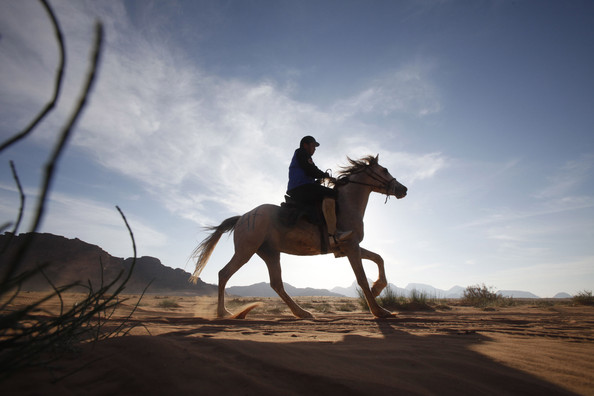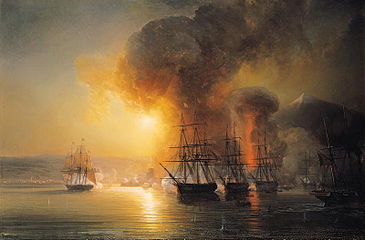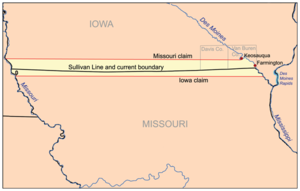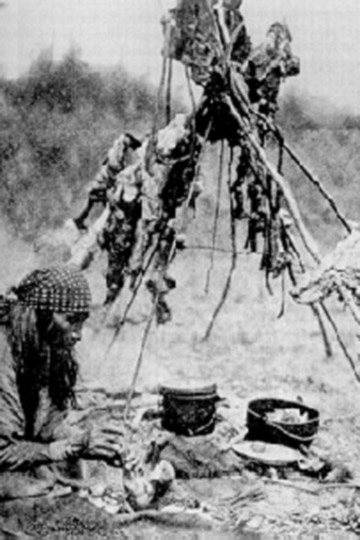
The consequences of a war have long been established, but the reasons the war starts in the first place interests us the most. Here are ten stupid reasons, combined with the egos of those in charge that resulted in some of the bloodiest wars ever fought.
The war of the Pacific or the Great Guano War was fought between Peru, Bolivia and Chile from 1879-1883. Guano is Spanish for bird droppings, so the great Guano War roughly translates into the great war for bird poo. Thanks to its high level of phosphorus and nitrogen, guano was an effective ingredient in the manufacturing of fertilizers and gun powder. Needless to say guano was worth its weight in gold.
The main deposit of guano was on the coastal side of Atacama Desert. The three hundred and fifty mile nitrate enriched desert coast line was mostly under the control of Peru and Bolivia. Bolivia lacked the resources and the man power to exploit this deposit, so they contracted it out to Chilean companies.
Over the years there were many disputes as Bolivia tried to press for larger revenue. This led to a secret agreement between Peru and Bolivia; the Peruvian government had planned to secure the control of the output by state purchase and operation of nitrate properties. Such alliance required Bolivia freeing its hands off Chilean miners, so in 1879 Bolivia increased the taxes on minerals. Chile, trying to protect the interest of its mining companies, took control of the mining region, prompting Peru and Bolivia to declare war.
Who won?
Chile won the war thanks to its superior navy. The victory resulted in Chile taking control of the entire desert coast line in dispute. The loss left a deep scar in the Bolivian and Peruvian society; even to this day it remains an emotional issue which was evident during Bolivia’s Natural gas riot of 2004.
Caualties: 13000+
9. The War of Dahis and Ghabra

The war of Dahis and Ghabra ,which lasted for 40 years, was fought between two Arabian tribes (Abs and Dhubiyan) over a disputed horse race, in which the former accused the later of cheating. It began when the leader of Abs challenged his counterpart at Dhubhiyan to a race. Abs had a horse called Dahis (a breed famous for its speed) which they pitched against the Dhubhiyans horse, Ghabra. The race was to be one hundred bow shots in length, and the wager of hundred camels was agreed.
During the race Ghabra took the lead but Dahis overtook and was about to win the race when Dhubyanites ambushed the leading horse and drove him off course. Hearing about the foul play, Abs proclaimed victory but the later refused to pay. Resenting the treachery, the Abs slew the brother of Dhubiyans leader. The Dhubiyans did the same to the Abs’s leader brother. The horseman declared the war which lasted for forty years.
Who won?
Although Dhubiyans held their own, neither could take a decisive advantage, and the war dragged on for years.
Casualties: Unknown
8. The Pastry War

France went to war with Mexico in the year 1838. The war began with the naval blockade of some Mexican port and capture of a fortress in Veracruz. It ended in 1839 with the British brokering the peace.
Pastry War, as it’s charmingly called, started when a French pastry cook claimed that during a civil disturbance 1828, his bakery was vandalized by some Mexican army officials. The chef demanded payment for the losses from the Mexican authority but got none. Finally ten years later the chef pleaded to the King Louis Philippe of France to come to its citizen’s aid.
Mexico had previously defaulted millions of dollars in loan from France. Louis, taking this as the last straw, ordered Mexico to pay 600,000 pesos towards damages caused to its citizens. The amount was extremely high, as an average Mexican workman’s daily wages was 1 peso. Mexico refused to pay, giving France the excuse to deploy its navy.
Who won?
The skirmish lasted for a year before British intervened and made Mexico pay 600,000 pesos.
Casualties: 300+
7. French Invasion of Algeria

Algeria was under French rule from 1830 to 1960, prior to that it was a part of Ottoman Regency. The relations between France and the regency during that time were on the edge. Dey Hussein (Ottoman provincial ruler to Algiers) demanded an answer over the outstanding debt from the French Consul. Unsatisfied with the answer, the irritated ruler allegedly hit the consul with his hand held fan.
This incident was taken quite seriously by Charles X of France, who took this as an opportunity to increase his popularity among his disgruntled population. Charles X ordered a blockade of Algerian ports. The blockade lasted for three years until a ship carrying a French ambassador to Dey for a proposed negotiation was bombarded. France took this as a declaration of war and ordered a full scale invasion.
Who won?
Although there was resistance over the years, the French took full control of Algeria by 1834.
Casualty: Unknown
6. 301 Year War for Shaving a Beard

Who won?
The war lasted for 301 year from 1152–1453, France won the long and arduous war but at very high economical and collateral losses.
Casualties: Unknown
5. Al Basoos War

Al Basoos War is another Arab tribal war which lasted for over 40 years (from 494-534). Named after an old woman, the war was fought between Thaglib and Bakr tribes. It started when a she-camel belonging to the neighbor of Al Basoos, wandered and mingled with the flock belonging to Kulyab (chief of Thaglib tribe). Unable to recognize the camel, Kulyab killed it.
When Al Basoos’s nephew, who was the leader of Bakr tribe, learned of this development he sought vengeance and killed Kulyab. This resulted in another tribal war.
Who won?
There wasn’t any clear winner as the war dragged for ages until it was finally forgotten about.
Casualties: Unknown
4. The Cod Wars

The Cod War is a jocular term given to a confrontation between Iceland and Britain over the issue of fishing rights. It started in 1958 when Iceland took it upon itself to increase its fishing boundaries from 4 miles to 12 miles, and then in 1972 when it further increased its boundaries to 50 miles. Iceland wanted exclusive fishing rights since that was its only source of income. Both the countries came to an agreement where Iceland would allow certainfishing zones for British trawlers to fish in and also imposed a limit on the amount that could be caught by the British trawlers. The agreement was valid for 2 years and expired in November of 1975, soon after which the Third Cod War started. Iceland further increased its fishing boundaries from 50 to 200 miles and overall banned British trawlers in its water. The British deployed over 20 frigates to protect the interest of its fisherman.
Who won?
You could say Iceland. Britain and the other fishing countries agreed to the Icelandic demands after NATO and US intervened. Iceland had previously threatened NATO of shutting down their base in Keflavik (a strategically important base to NATO during the Cold War) if their demands weren’t met.
Casualties: None
3. Honey War

The Honey War was a 1830’s territorial dispute between Iowa and Missouri. The 9.5 mile long strip running across the border was the source of the dispute caused due by unclear wording in the Missouri Constitution on boundaries. The Governors of both states ordered their respective militia to patrol their side of the border, after a Missourian sheriff was incarcerated trying to collect taxes in the disputed zone. There was other incident where three trees containing valuable honey were cut down, hence the name Honey War.
Who won?
The situation was on edge until Supreme Court intervened and declared the issue in Iowa’s favor.
Casualties: None
2. The War of the Golden Stool

During the late 19th and early 20th century the British bullied its way into Africa. Thanks to the obvious superiority of guns over spears and bows, the British quickly quelled any form of resistance. One of them was from a kingdom named Ashanti (modern day Ghana).
After initial skirmishes British forces finally exiled the Ashanti king, Premeph I. Further more, the governor, Sir Frederick Mitchell Hodgson, in 1900 demanded to sit on a golden stool during an assembly. This insult didn’t go down well with the people of Ashanti as the golden stool is the throne to the Ashanti king and also a sacred symbol to its people. In order to protect its heritage, Yaa Asantewaa rallied the troops and declared war on the British
Who won?
Although the British finally conquered the Ashanti’s, it was the later who won the war as they fought for the golden stool, and succeeded. The British never recovered the stool.
Casualties: +3000
1. The Pemmican War

The Pemmican War was a serious armed confrontation between two British fur-trading companies operating in Canada: Hudson’s Bay Company and The North West Company. The problem started in 1811, when Earl of Selkrik, Thomas Douglas, started the colonization project known as Red River Colony on a 120000 sq miles of land provided by the HBC.
Thomas wanted to monopolize the fur trading business to HBC, hence he banned all the Métis (Europeans who got married to the natives) from trading with NWC. And in 1814 the Governor of the Red River colony issued a proclamation intended to limit the number of buffaloes killed by the Métis. This enraged the Métis who disregarded the proclamation and started converting the buffalo’s meat to pemmican.
The governor issued ban on pemmican export and seized four hundred bags of pemmican belonging to NWC. He also ordered the company to end its trading post in the Red River. NWC, along with Métis, declared war on HBC and Red River, looting, pillaging and burning down post forts belonging to the HBC. The commercial struggle of both of the companies turned into guerrilla war fare when HBC retaliated with militia of its own.
Who won?
None. The Crown, disgraced by the two company’s action, forced both the companies to merge under one name.
Casualties: 21 people including the Governor who was killed in the Battle of Seven Oaks
source: http://www.toptenz.net/top-10-idiotic-things-started-war.php
.
